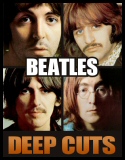Music Home / Entertainment Channel / Bullz-Eye Home
 Buy your copy from Amazon.com
Buy your copy from Amazon.com
| Pearl Jam: Vitalogy Released: 1994 |
For many fans who boarded the Pearl Jam Express after 1991's Ten and 1993's Vs., the mellow tones of Vitalogy marked the end of the line. Those first two albums, along with early releases from Nirvana and Soundgarden, typified what the Seattle grunge movement was all about. But Vitalogy, named after an 1899 health encyclopedia and housed in a cardboard package designed to look like that original book, distanced itself from its ancestors by reaching a degree of sublime creativity, both on a visual and musical level, that Pearl Jam had never before attained. For those who expected more of the same from the Seattle quintet, Vitalogy's deviations were viewed almost as an act of betrayal and, in many cases, grounds for abandonment. Unfortunately for the disillusioned fans who renounced Pearl Jam following this particular release, they missed out on what many consider to be the band's finest and most polished album to date.
The truly ironic thing about all of this is there are some genuine bullies on Vitalogy that rival even the most raucous moments of Ten and Vs. In fact, the disc runs full-throttle through the first three tracks -- "Last Exit," "Spin the Black Circle" and "Not for You" -- before decelerating slightly on "Tremor Christ." "Spin," a riotous tribute to vinyl that netted the band a Grammy in 1996, particularly stands out with some aggressive guitar work from Mike McCready and Stone Gossard clearing the path for Eddie Vedder's rowdy vocals. This exhausting pace is later revived on "Whipping," "Satan's Bed" and "Corduroy," the hit single that still stands as one of Vitalogy's greatest triumphs.
But it's a trio of somber tunes that caught the critical eye of many grunge fanatics, in particular "Better Man," a song Vedder wrote in the late-1980s as the frontman for Bad Radio. "Immortality," a magnificently constructed song with a distinct Neil Young flavor, is one of my all-time Pearl Jam favorites, as is "Nothingman," a brooding work of pure poetry that harbors a treasure chest of haunting lyrics: "Walks on his own / With thoughts he can't help thinking / Future's above / But in the past he's slow and sinking."
Some detractors also argue that the flow of the album is somewhat interrupted by four short, experimental tracks -- "Pry, to," "Bugs," "Aye Davanita" and "Stupid Mop" -- but aside from "Bugs" these are all bearable, if not moderately endearing.
Following the success of Pearl Jam's first two albums, Vitalogy went platinum the first week of its release. But while the disc was showered with critical acclaim, some fans who weren't quite ready to surrender their flannel shirts just weren't impressed. If you're one of the many who gave up on this album all those years ago, do yourself a favor and give it another chance. It may not match Ten's groundbreaking significance, but in pure musicianship Vitalogy blows its predecessor out of the water.
jcodding@bullz-eye.com






